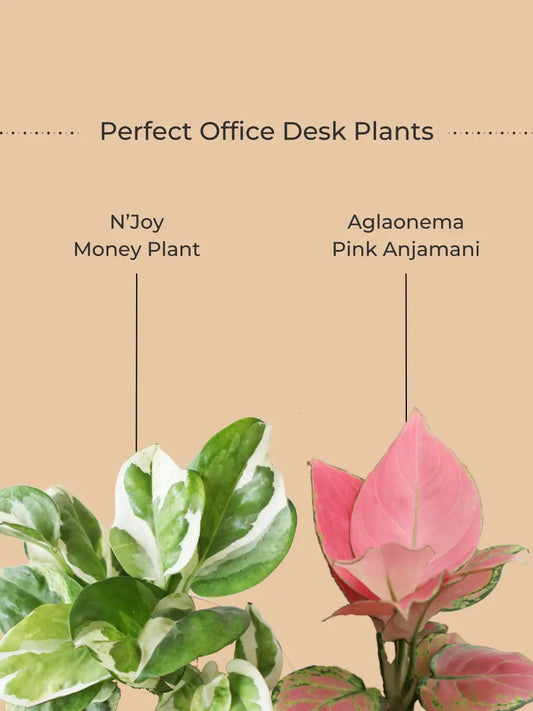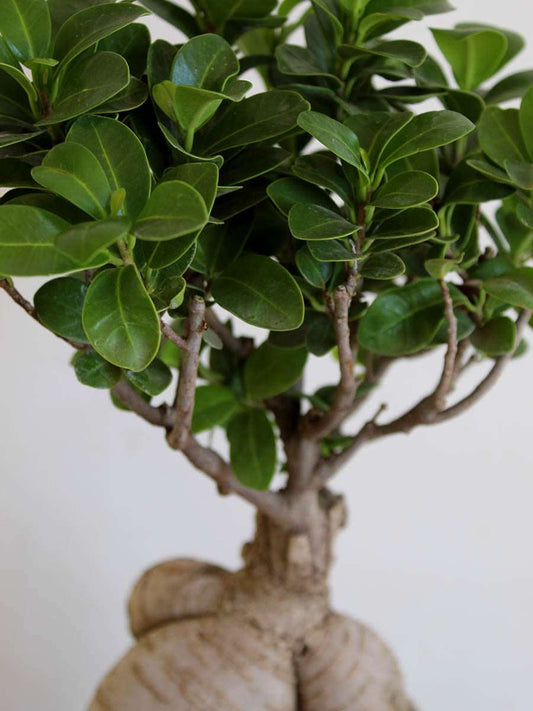Religious Plants in India
Did you know that some plants are revered in India for their spiritual significance in addition to their aesthetic & benefit? The beautiful plants used to decorate homes & temples are one example of the close connection between spirituality & daily life. Not only do they have spiritual significance, but they also frequently symbolize bigger intellectual ideas or provide genuine connections to the divine. Many well-known plants serve as ritual allies, & each has its own narrative & set of responsibilities. Let's take a look at India's 11 different religious plants.
What Is a Religious Plant?
A religious plant refers to the belief & practice of various religions in which plants are considered sacred & have spiritual significance. Moreover, human society has long valued plants for their religious & other benefits. In Indian philosophy, plants are living beings made of water, earth, fire, akasha, & air. So, planting plants is a religious practice because it helps people live better according to Devtas.
That’s why ancient societies understood ecological equilibrium & performed well. In their faith, growing trees for fruits & flowers was rewarded, whereas destroying a green tree was unforgiving. In rural families, cow worship & donation are crucial. Buddhist texts call plants living creatures, thus monks never cut them down. 24 Jain tirthankaras meditated under trees to achieve enlightenment.
Islamic scripture recommends tree planting but not cutting them down. Allah treats all fruit as charity, hence cutting down fruit trees is punishable. The Holy Bible says God created trees with seed-bearing fruit, & sowing seeds increases their number.
Best 11 Religious Plants to Worship
1. Tulsi (Ocimum tenuiflorum):

Tulsi (or Holy Basil), a perennial herbaceous plant belonging to the mint family, is highly valued in India. Not only is it used as a medicine, but it also has religious meaning as a calm sign to keep evil spirits away. Moreover, Tulsi, a herbal remedy with a physical appearance, is deeply connected with every aspect of Indian life & provides a daily spiritual nourishment. Almost every Hindu household in India has a Tulsi plant.
2. Bilva Patra (Aegle marmelos):

Bilva Patra, also known as Bael, is a tree that is associated with Parvati's divine nature in mythology. This plant, which is indigenous to tropical India & Southeast Asia, provides many health benefits. The fruit's minerals & soothing mucilage provide nutrition in a sip. Moreover, due to the plant's well-known rejuvenating properties, individuals in search of vitality (energy) seek out its leaves & fruit. People believe it has healing powers & use it in traditional medicines either raw or mixed with other herbs to make refreshing drinks.
Also Check This: Vastu Shastra: Best Indoor Plants as Per Vastu
3. Peepal (Ficus religiosa):

The peepal tree is sacred in Buddhism & Hinduism. Peepal trees are bodhi trees—"Ficus" indicates fruit, "Religiosa" symbolizes faith.Because it represents Buddha, pilgrims from around the world worship it. Hindus believe Vishnu was born here. Women in Indian villages worship the peepal tree for childbirth. Sanatan Dharma refers to it as the Tree of Gods, as God resides in every leaf. Hindus believe that peepal tree worship with a diya cleanses all Doshas.
4. Ashoka (Saraca asoca):

The Ashoka tree, sacred in India, is associated with traditional beliefs & the Hindu God of love, Kamadeva. It is believed that Gautama Siddhartha, the founder of Buddhism, was born under the tree. The Ashoka tree is a significant cultural emblem in India, used in religious ceremonies, worship, & marriages. It is cultivated on temple grounds & prominently featured in garbha-griha ceremonies.
5. Lotus (Nelumbo nucifera):

The lotus flower is considered sacred in India because of the contrast between its earthy roots & its ethereal petals. It represents purity & holiness in Indian customs & appears as a decoration for gods & goddesses in Hindu mythology. Lotuses are essential to Hinduism, Buddhism, Jainism, & Sikhism's art. Lotuses symbolize spiritual awakening, beauty, fertility, cleanliness, wealth, & endless life in Hinduism. The Bhagavad Gita compares a person to a lotus that "they work without attachment & submit to God".
6. Coconut (Cocos nucifera)

The coconut tree holds spiritual significance in Hindu religion. It's known as the "Great Gift" in Hindi. Leaves, flowers, & fruits all play symbolic roles in Indian faiths, signifying prosperity & longevity. Hindus revere coconuts because they represent the trinity of Brahma, Vishnu, & Mahesh. The fruit is also a staple at social & religious gatherings. Coconuts, for example, are considered fortunate for the Hindu New Year. Since the coconut has so many applications, it is given the name Shrifal & revered status as Kalpawriksha in Hindu scripture.
Also Check This: New Year Plant Decoration Ideas
7. Jasmine (Jasminum spp)

The jasmine or Mallika in Sanskrit, is highly revered in Hinduism that symbolizes good fortune. Moreover, the delicate scent of jasmine is also used in Hindu ceremonies. Even outside of religious ceremonies, Indian ladies often wear this fragrant flower in their hair as a symbol of good fortune & success. Additionally, they are classic components of fragrant hair tonics, natural gifts expertly combined into concoctions that reveal the secrets of long-lost beauty practices.
8. Mango (Mangifera indica):

Mango trees are a veritable treasure trove, producing greenery & fruits that are both essential components of Hindu festivities & rituals. Farmers take good care of these trees so that envious (evil) people can't look at their houses (primarily protection from evil eye). Additionally, the trees provide the children with environmentally friendly study materials that aid them in their preparation for school tests. Many religions regard this tree as a symbol of love.
9. Marigold (Tagetes spp):

In Hinduism, the marigold is considered a sacred flower because of its vibrant yellows & rich oranges. When flowers are offered as a token of devotion at the feet of a deity, they represent submission & reverence to a higher power. Their color represents faithfulness & their scent soothes the soul. Flowers like these are prominent features throughout Diwali & Navratri celebrations. They represent everything that is pure, fortunate, & divinely touched.
10. Banana (Musa sp.)

The banana tree is a sacred emblem in Hinduism, representing both Vishnu & Lakshmi. They believe Lord Vishnu resides there, hence the name God Brihaspati. The tree is worshiped on Thursday to aid Jupiter, & the fruit is served as Prasad or Bhog. The tree is holy to the nine forms of Kali, helps married couples live happily & peacefully, & eliminates issues & barriers. People in India consume bananas for several reasons & consider them part of their culture.
11. Banyan (Ficus benghalensis)

In Hinduism, the banyan tree represents immortality & fertility. In some religions, like Jainism, it represents god. This tree is a great example of endurance because it can grow very large & live a very long time. The origins of this tradition can be traced back to a banyan tree in Jaipur, Rajasthan, planted by Adi Sankara thousands of years ago. An ancient banyan tree survives, its canopy covering more than 50 acres. Most of the people in North India regard banyan trees to be religious trees.
Also Check This: Choosing the Right Indoor Plants for Your Zodiac Sign
Conclusion
Plants in religious contexts demonstrate humanity's sacred connection with Mother Nature. Understanding how different religions regard plants helps us create a future that promotes spiritual progress & natural equilibrium. It also prepares us for today's challenging topics, such as global warming, air pollution, water conservation or more.
Plant additional Greenkin plants for a more favorable present & future. Stay in touch with Greenkin for more information.




















